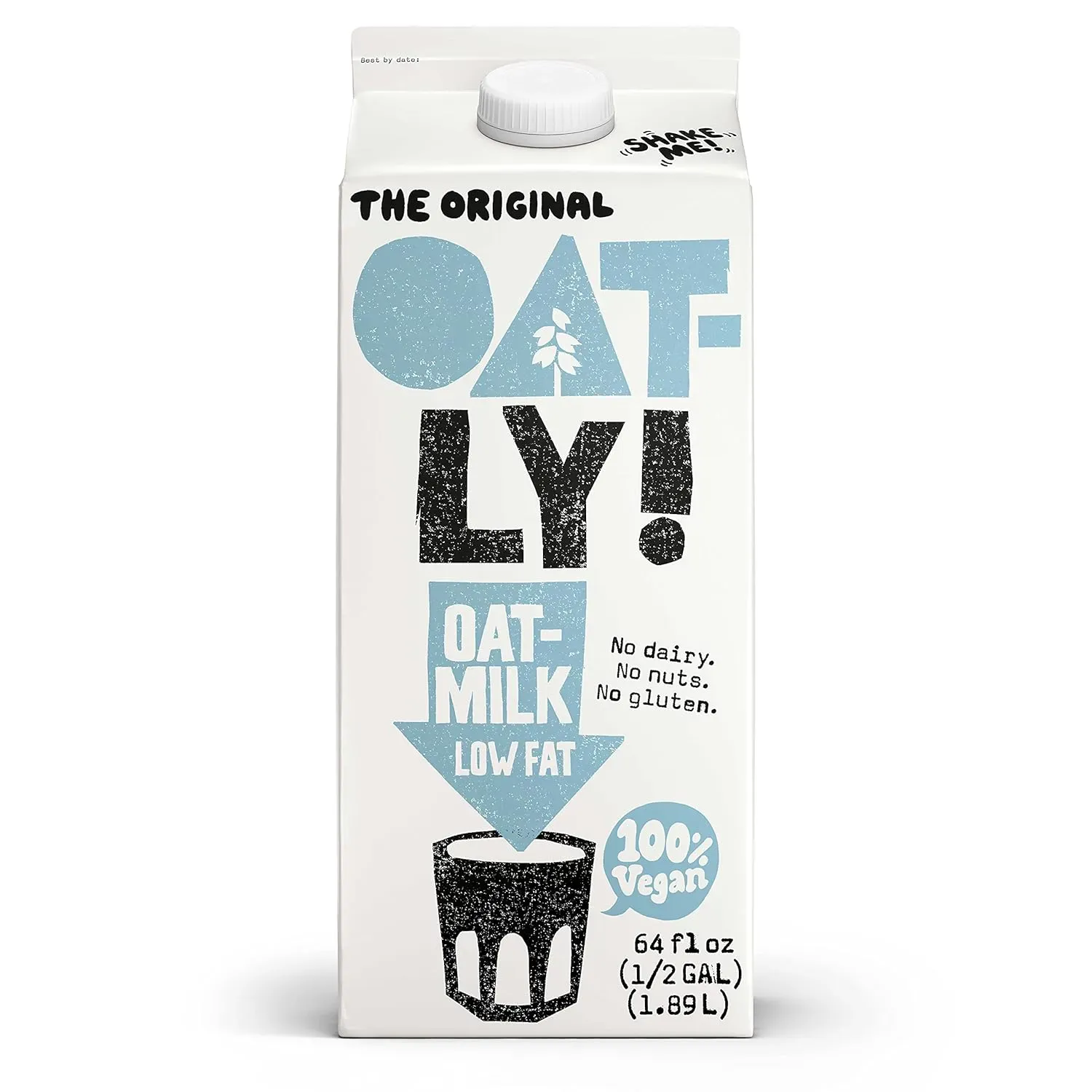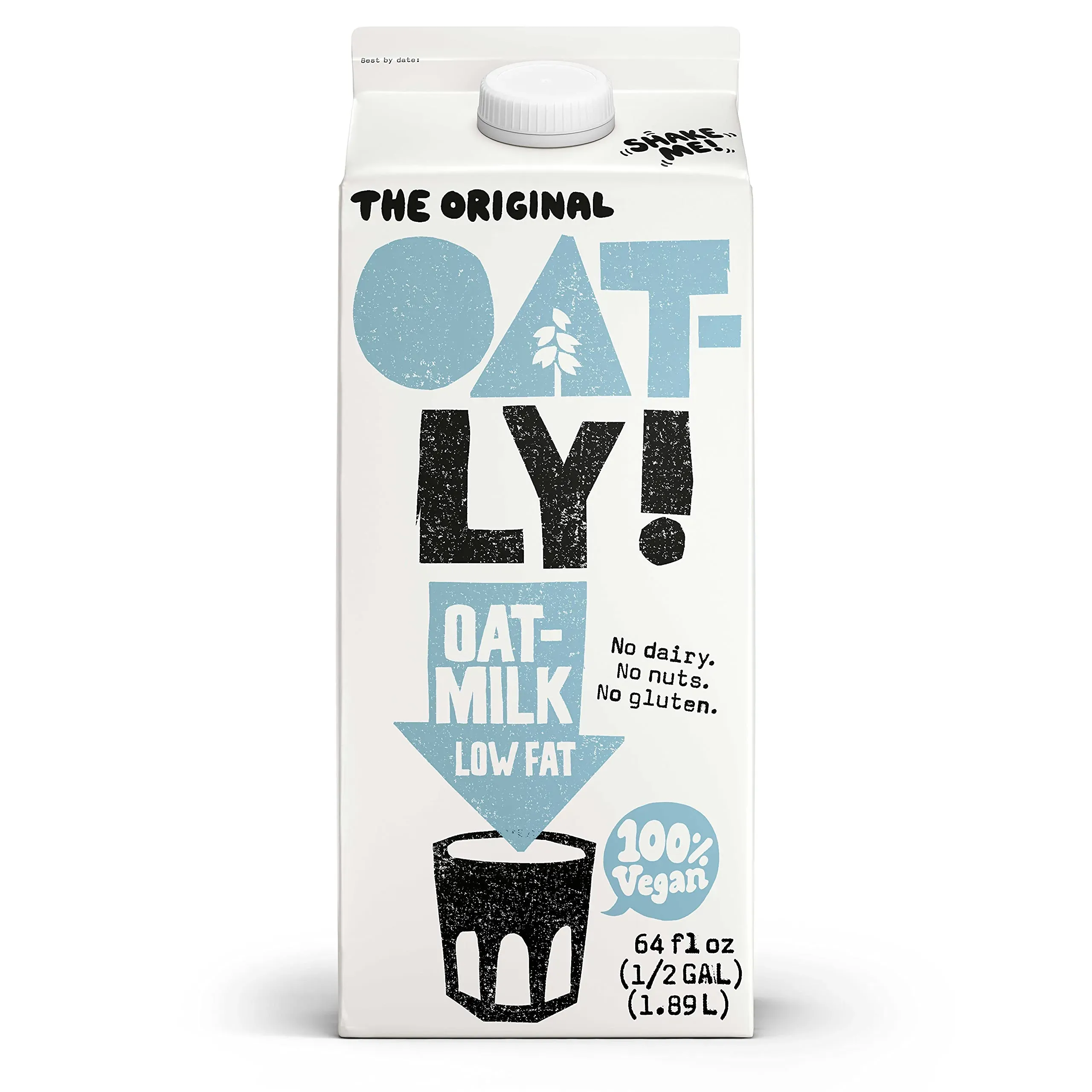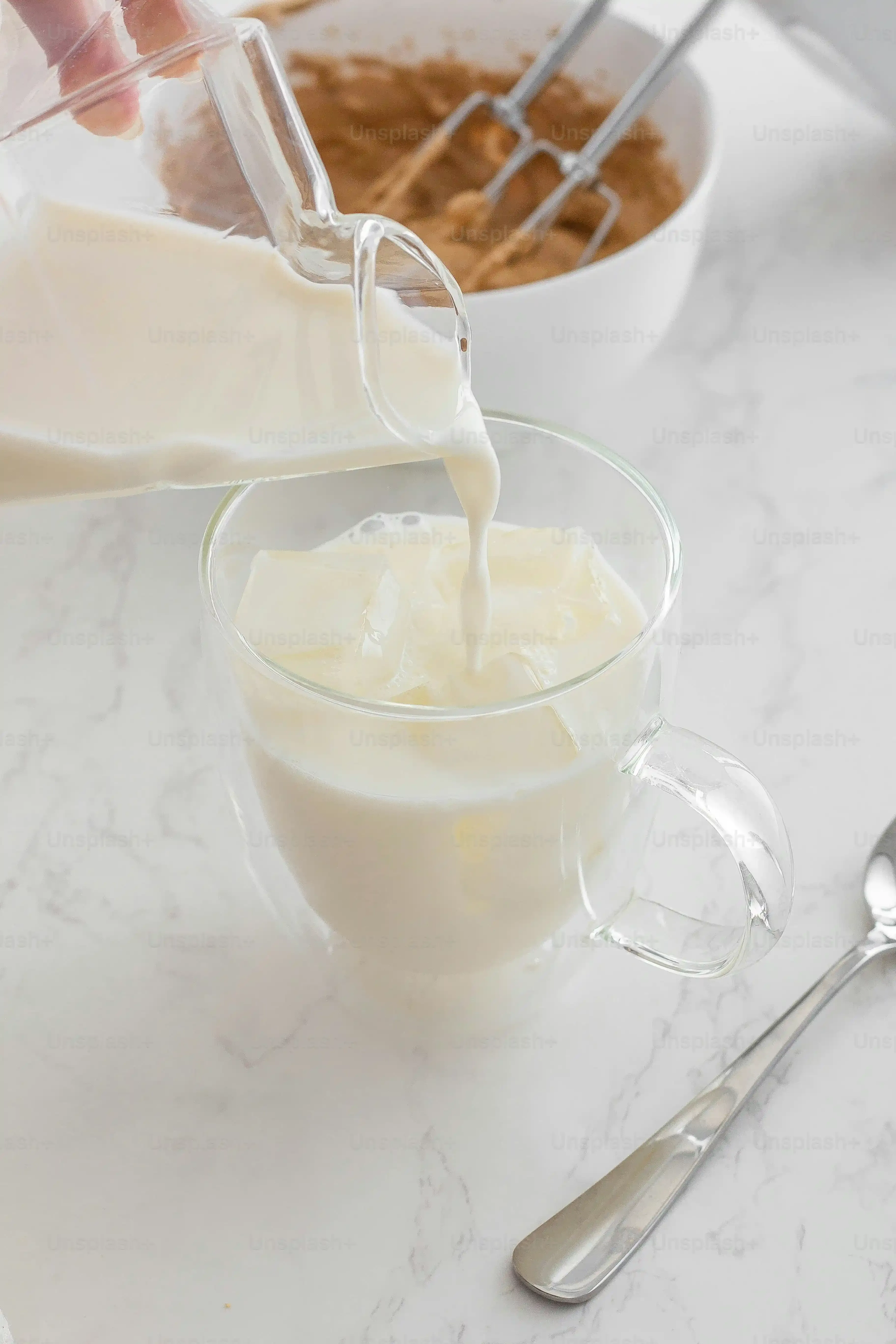Table of Contents
Walk into any coffee shop or grocery store these days, and you're met with a dizzying array of milk alternatives. Among them, oat milk has skyrocketed in popularity, becoming the go-to for many ditching dairy. It's praised for its creamy texture and mild flavor, but like anything trendy in the food world, questions pop up. A big one people often ponder, perhaps while hovering over the refrigerated section, is: is oat milk low fat? It feels like it should be, given its plant origins, but nutritional profiles can be surprisingly complex.
Is Oat Milk Low Fat? Breaking Down the Nutrition

Is Oat Milk Low Fat? Breaking Down the Nutrition
What's Actually In That Carton?
So, you've grabbed a carton of oat milk, maybe eyeing it for your morning latte or cereal. The big question often brewing is, "is oat milk low fat?" It seems intuitive, right? It's made from oats and water. How much fat could there possibly be? Well, peel back the label, and things get a little more interesting than just blended grains. The base is simple: rolled oats mixed with water, then strained. This process extracts some of the soluble fiber and starches from the oats, creating a milky liquid. But that's just the starting point for most commercial versions.
Typical Nutrition Numbers: More Than Just H2O
Let's talk numbers for a standard, unsweetened oat milk you might find on the shelf. A single cup (about 240ml) usually clocks in around 120 calories. Carbs are a significant player, often hitting 16 grams, primarily from the oats themselves. Fiber is usually present, maybe 2 grams, which is a nice bonus. Protein? Don't count on it for a muscle-building boost; you're typically looking at only 3 grams. Now, the fat. This is where the "is oat milk low fat" question gets tricky. Many popular brands include added oils, like rapeseed or sunflower oil, to give it that creamy mouthfeel dairy-drinkers crave. This addition bumps the fat content up, often to around 5 grams per cup. Some brands offer a "low-fat" version, which typically means they've either used less added oil or none at all, aiming for closer to 2 grams of fat.
Nutrient (per 1 cup) | Typical Oat Milk | Low-Fat Oat Milk |
|---|---|---|
Calories | ~120 | ~90 |
Total Fat | ~5g | ~2g |
Carbohydrates | ~16g | ~15g |
Fiber | ~2g | ~2g |
Protein | ~3g | ~3g |
Added Oils: The Creamy Secret (and Fat Source)
That luxurious texture that makes oat milk so good in coffee? Much of that comes from added fats. While plain blended oats and water can be a bit thin, manufacturers add oils to emulsify the liquid and replicate the richness of dairy milk. Rapeseed oil (also known as canola oil) or sunflower oil are common culprits. This is the primary reason why the answer to "is oat milk low fat?" isn't a straightforward yes. A standard serving often has more fat than skim milk, and sometimes even more than 1% or 2% dairy milk. If you're specifically looking for a truly low-fat option, you need to scrutinize the ingredient list and the nutrition panel for versions labeled explicitly as "low-fat" or those without added oils.
Comparing Fat Content: Is Oat Milk Low Fat Compared to Others?

Comparing Fat Content: Is Oat Milk Low Fat Compared to Others?
So, you're asking, "is oat milk low fat," especially when you stack it up against the usual suspects in the dairy and non-dairy aisles? Let's lay it out. A cup of standard whole cow's milk carries about 8 grams of fat. Move to 2%, and you're looking at 5 grams. Skim milk, the true low-fat champion of the dairy world, has practically zero fat, maybe 0.5 grams. Now, let's look at the plant-based competition. Almond milk, often perceived as light, typically has around 2.5 grams of fat per cup (though this can vary). Soy milk usually sits in the 3-4 gram range. Coconut milk, the creamiest of the bunch, can range wildly, but the refrigerated beverage versions often have 4-5 grams, sometimes more if sweetened. So, where does our oat milk land? A standard carton, often enhanced with added oil for texture, commonly contains around 5 grams of fat. This puts it right in the ballpark of 2% dairy milk and some of the fattier plant milks. It's definitely not in the skim milk category when it comes to fat content.
Beyond the Fat: Oat Milk's Health Benefits and Downsides

Beyond the Fat: Oat Milk's Health Benefits and Downsides
so we've established that asking "is oat milk low fat?" doesn't always yield the simple answer you might expect, thanks to those added oils. But let's pivot slightly. There's more to a drink than just its fat grams, right? Oat milk does bring some interesting things to the table. It's naturally lactose-free, which is a huge win for a lot of people. It's also free of common allergens like soy and nuts, making it a safer bet for those with sensitivities. One of its actual nutritional superpowers comes from beta-glucan, a type of soluble fiber found in oats. This stuff is pretty neat because it can help manage cholesterol levels and contribute to feeling full. Plus, many brands are fortified with vitamins and minerals you'd typically get from dairy, like Vitamin D, calcium, and sometimes Vitamin B12. However, it's not all sunshine and rainbows. Remember those added sugars and emulsifiers we mentioned? Those can be a downside. Too much added sugar is just bad news generally, and some emulsifiers might mess with your gut health, causing bloating or discomfort for some folks. And while it has some protein, it's significantly less than dairy milk, which is something to consider, especially for growing kids who need those building blocks.
Fitting Oat Milk Into Your Diet: Is Low Fat Always Best?

Fitting Oat Milk Into Your Diet: Is Low Fat Always Best?
Deciding If Low Fat is Your Goal
so we've dug into the numbers and figured out that "is oat milk low fat" isn't a simple yes. Now, how does this fit into your actual eating habits? Whether a low-fat oat milk is "best" really depends on why you're drinking it and what else is on your plate (or in your mug). If you're carefully tracking your total fat intake throughout the day, perhaps due to specific dietary goals or health conditions, then opting for a version explicitly labeled "low-fat," which typically has around 2 grams of fat per cup, makes sense. This is especially true if you're using larger quantities, like in smoothies or baking. Every gram adds up, and choosing the lower-fat option here can give you more flexibility elsewhere in your diet.
When a Little More Fat Isn't a Bad Thing
On the flip side, that standard oat milk with 5 grams of fat per cup? It's not the devil. Remember, much of that fat comes from added oils like rapeseed or sunflower, which are often unsaturated fats. For many people, a few extra grams of these fats aren't a major concern in the context of a balanced diet. Plus, that added fat is what gives standard oat milk its desirable texture and mouthfeel, making it a much better stand-in for dairy milk in coffee or for pouring over cereal if you prefer something richer. If your primary goal is simply to avoid dairy or allergens, and you're not strictly limiting fat, the standard version is perfectly fine. It boils down to your overall dietary pattern and what you're using the milk for.
- If you're counting macros or strictly limiting fat: Choose low-fat oat milk (check for ~2g fat/cup).
- If you prioritize texture and dairy-like richness: Standard oat milk (~5g fat/cup) will likely be more satisfying.
- If you're using it in small amounts (e.g., a splash in coffee): The fat difference between types is less significant.
- Always check the nutrition label and ingredient list for added sugars and oils.
Making Your Choice Work For You
Ultimately, fitting oat milk into your diet, regardless of its fat content, means looking at the big picture. Don't get fixated solely on whether "is oat milk low fat?" Consider the added sugars – some brands pile them in, turning a seemingly healthy choice into more of a dessert drink. Are you getting enough protein from other sources if you're relying on oat milk? If you're using it as your main milk source, especially for kids, think about fortification; ensure it's providing calcium, Vitamin D, and B12, which are crucial nutrients often found in dairy. Read labels, understand what's in your specific brand, and choose the version that aligns best with your personal health goals and taste preferences. It's a tool in your dietary toolbox, not a magic bullet, low fat or otherwise.
The Verdict on Oat Milk's Fat Content
So, circling back to the core question: is oat milk low fat? The reality is, it depends heavily on the specific product you grab off the shelf. While the base ingredients of oats and water are relatively low in fat, many brands add oils like rapeseed or sunflower oil to enhance creaminess, significantly increasing the fat content. This means some oat milks can have fat levels similar to or even exceeding 2% or whole dairy milk. Others are specifically formulated as "low-fat" or "light" versions. The takeaway is clear: you can't assume all oat milk is automatically low fat. Always check the nutrition label to understand exactly what you're consuming and how it fits into your overall dietary goals. Choosing the right carton means making an informed decision based on facts, not just the trendy plant-based label.
